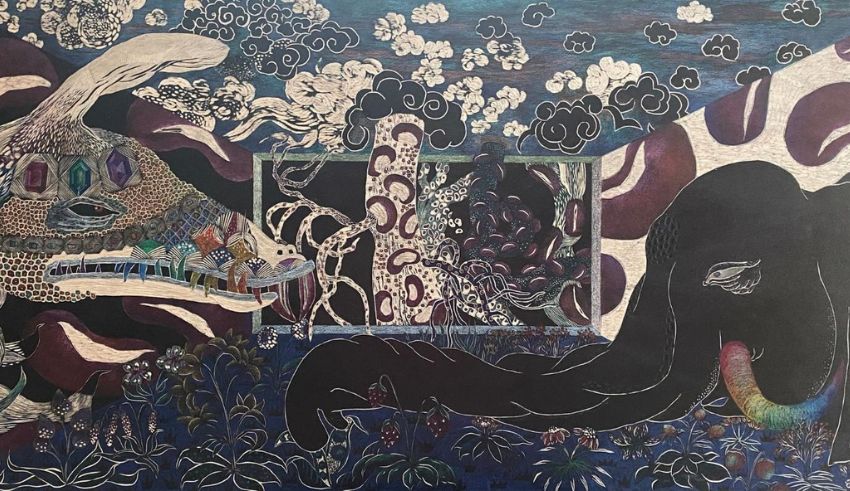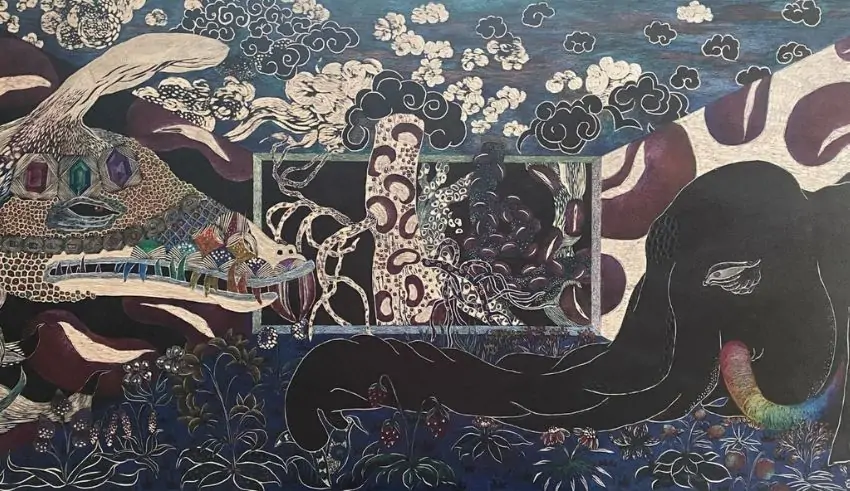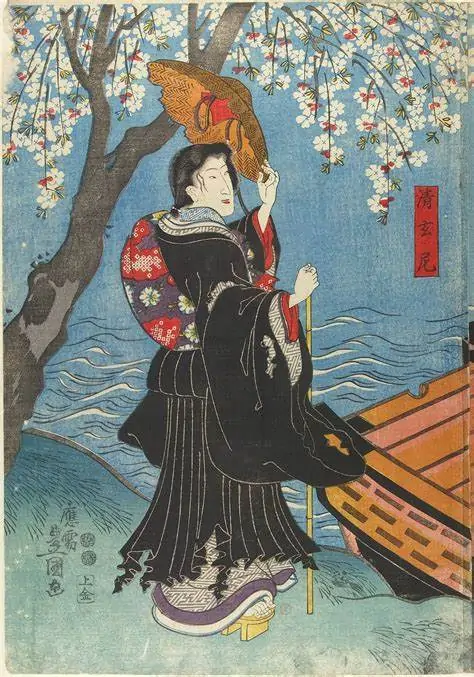

(C) Sovereign Art Foundation
Which of the following contemporary works of traditional Asian art stand out the most?
In Asia, a continent renowned for its complex and varied cultural past, one can find a millennium-old artistic tradition that has been handed down through the years. We will keep being witnesses to the ageless beauty and significance of traditional Asian art starting in 2024 and going strong for a very long time.


Classical paintings are still very much a part of Asian art because of its rich meaning and beautiful brushwork. Famous for their incredibly detailed landscape paintings, works from the Chinese Song Dynasty still draw art lovers. Famous for their minute detail are these paintings. Collectors have a particular place in their hearts for the Japanese Ukiyo-e prints, which capture the transient aspect of the pleasures that the world offers. Similar feelings are shared by collectors of Japanese prints.
One can see stone carvings in the historic temples of India. These sculptures are a great representation of the spiritual essence of the area and narrate tales of gods and goddesses. Thai Buddhist sculptures are instances of calm and tranquility as well as creative wonders and religious symbols. Their composed manner and complex face features are two further traits that distinguish them from other religious monuments.
Textile weaving is one of the many fields where Asian traditions are clearly visible. Bold yet meaningful designs are what define batik fabrics in Indonesia. This is the consequence of the intricate dying process used to create these designs. Persian carpets tell stories with their gorgeous patterns; they are more than just floor coverings. Persian carpets are made with great attention to detail and accuracy, and their elaborate designs are what define them.
It is well known that the Ming period porcelain produced in China is outstanding and has established a benchmark for ceramic arts excellence. Celadon pottery from Korea, with its jade-like finish, is still made because potters can still produce items that are not only useful but also aesthetically pleasing with their expert workmanship.
It is unavoidable that traditional art forms continue to have an impact on modern art even though they have historical roots. These timeless pieces of art inspire modern artists who use traditional themes and methods into their own creations. This combination creates a link between the past and present that enables traditional Asian art to be relevant well into the twenty-first century.
Asian traditional art is regarded as some of the best since it can transcend not just time but also cultural barriers. The ones that are highlighted here not only demonstrate the artist’s abilities but also tell a story that is understandable to people everywhere. Deeper exploration of the enormous field of Asian art reveals that the most important pieces are those that, despite their creation time, enthrall, instruct, and inspire people. This holds true if the works were produced in the past or in the present.
The objects on display give a peek of the tremendous riches that are only waiting to be found and enjoyed by those who are lucky enough to come upon them. Through ongoing study and understanding of these pieces, we are making sure that the history of Asian workmanship will be maintained for enjoyment and education of next generations. This will enable next generations to feel and value them.
If you are planning to fly via Malaysian Airlines or booked any of your travel through India or any of…
Music is a strongest medium to connect ourselves with the soul and any individual around the world because the emotion…
During the speech at the Financing Asia's Transition Conference the minister of environment in Malaysia called on ASEAN nations to…
The 61st Baeksang Arts Awards ceremony took place on 5 May 2025 at Seoul in South Korea and this glittering…
The fifth prisoner exchange took place on 6 May 2025 between Russia and Ukraine involving 205 prisoners and it is…
Established in the year 1921 and it still continues to showcase the legacy of this game through generations. This ‘Emperor’s…
This website uses cookies.
Read More